Astronomer Drew Sorenson of Jefferson was among those who headed out during the early hours of Tuesday morning to watch the first lunar eclipse of the year.
The “blood moon,” the reddish hue to the moon, was caused by how the sun’s rays refracted through the atmosphere, dispersing other parts of the spectrum of visible light and leaving only the red portion to reflect from the moon’s surface.
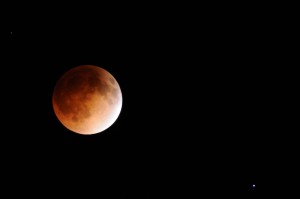 Sorenson shared pictures he shot between 1:30 and 3 am from his home on the outskirts of Jefferson (posted here in time sequence). He accommodated the cold night by keeping his telescopes indoors until the last possible moment, hedging against the lenses frosting over. He also used a telescope with a shorter focal length than he normally uses.
Sorenson shared pictures he shot between 1:30 and 3 am from his home on the outskirts of Jefferson (posted here in time sequence). He accommodated the cold night by keeping his telescopes indoors until the last possible moment, hedging against the lenses frosting over. He also used a telescope with a shorter focal length than he normally uses.
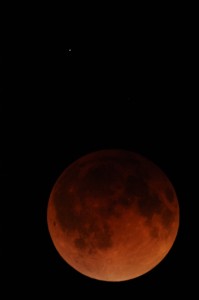 Following are Sorenson’s comments about the photos:
Following are Sorenson’s comments about the photos:
“I used a 70mm diameter, 700mm focal length (about 28″ focal length) refractor for the first pix, which shows a wider angle view, with blue Spica in the lower right. It also shows a fainter star above and to the left of the moon. For the other pictures, I used a longer focal length (‘closer’ view) refractor of 5″ diameter (about 127mm) and about 45” focal length.
“You can see the moon’s motion through the earth’s shadow by 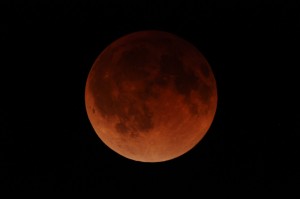 noting the shift of the moon into the darker part of the shadow (and leaving the sun’s light on the lower right part of the moon) through the lower part of earth’s shadow (with the lower part of the moon brighter,
noting the shift of the moon into the darker part of the shadow (and leaving the sun’s light on the lower right part of the moon) through the lower part of earth’s shadow (with the lower part of the moon brighter,
closer to the sun’s light) and then leaving earth’s shadow with sunlight returning to the lower left part of the moon.
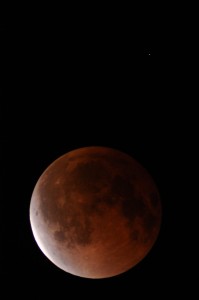
“Another way to see the moon move around the earth in that time is by comparing the position of the faint star above the moon and how the moon leaves it ‘behind’, with the moon moving east through the sky.
“Another thing I think is really neat about an eclipse like this is
seeing a bright sky turn dark, losing a moonlit landscape and being able to see some faint things during a time that you normally wouldn’t be able to see them. For a while, I used to 70mm refractor to see a couple of galaxies (M81 and M82 [which recently had a supernova]) in the Big Dipper area.
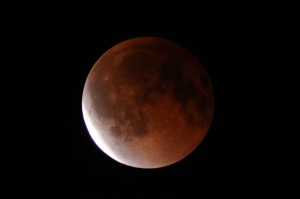 “This was called a ‘blood moon’ quite a bit. One of the things I think is really interesting is that eclipses kind of have a life of their own. Each is different. If the air around earth is pretty clear, the moon will be brighter and more orange. If there is more smoke from forest fires or volcanoes, or the moon passes through the middle of the earth’s shadow, the eclipses will probably be darker, sometimes so dark you would have trouble finding the moon during mid eclipse if you hadn’t been following it. There have been several
“This was called a ‘blood moon’ quite a bit. One of the things I think is really interesting is that eclipses kind of have a life of their own. Each is different. If the air around earth is pretty clear, the moon will be brighter and more orange. If there is more smoke from forest fires or volcanoes, or the moon passes through the middle of the earth’s shadow, the eclipses will probably be darker, sometimes so dark you would have trouble finding the moon during mid eclipse if you hadn’t been following it. There have been several
times when I thought I had seen blue, as I think you can kind of tell in this picture, if you look between the orange area and the ‘limb’ (edge) of the moon, where the sun is shining clearly on the moon again. Like sunsets, lunar eclipses can be very colorful.”
He said he considered setting up his telescopes downtown for a public viewing, as he has other times, but with a weather front predicted to move through and the cold weather, he set up closer to home.
The next lunar eclipse will be Oct. 8.
